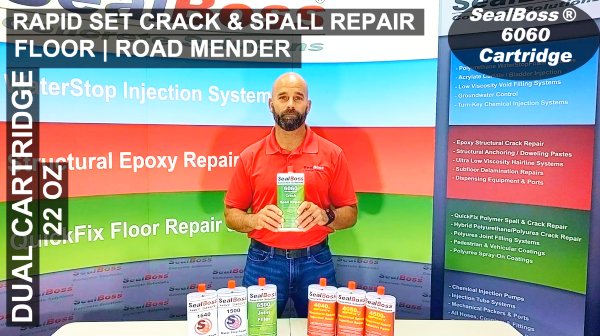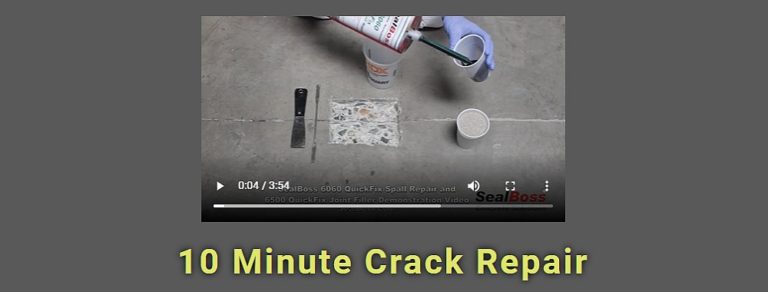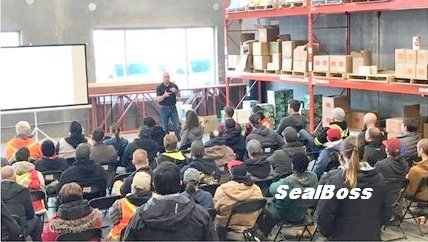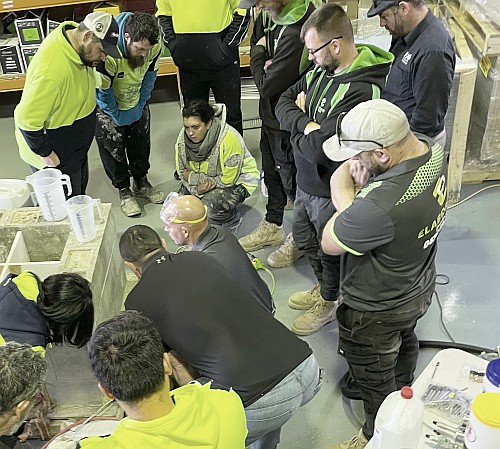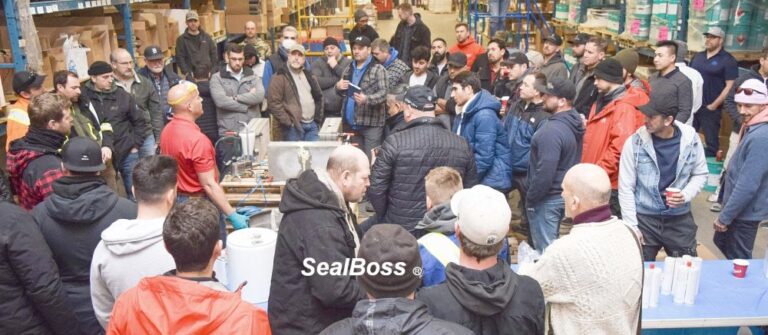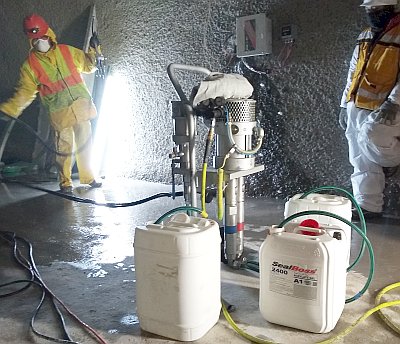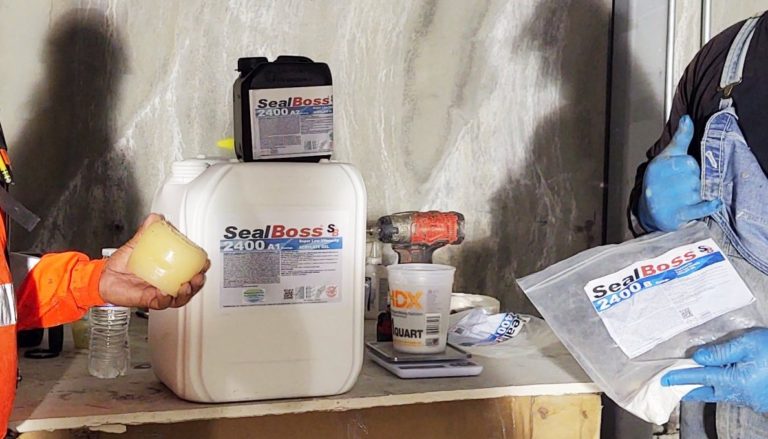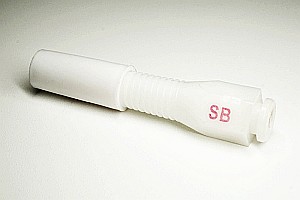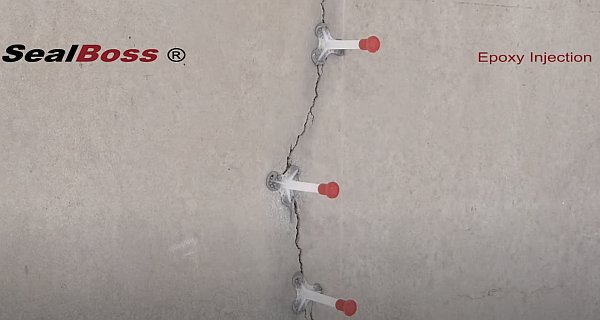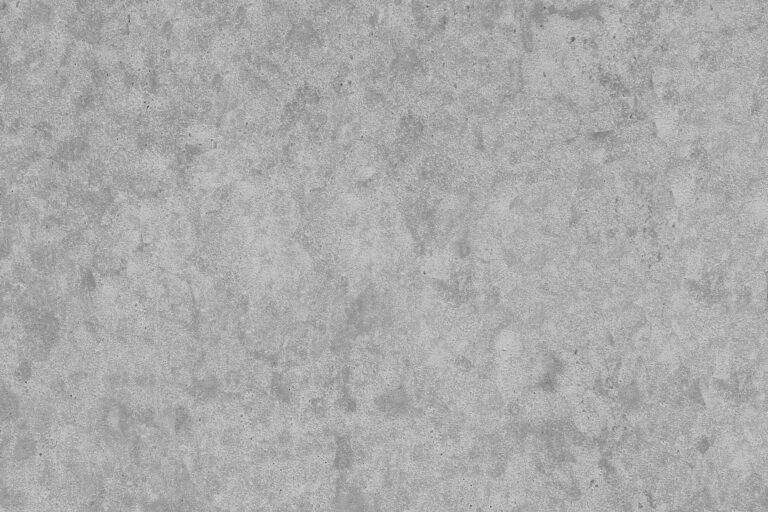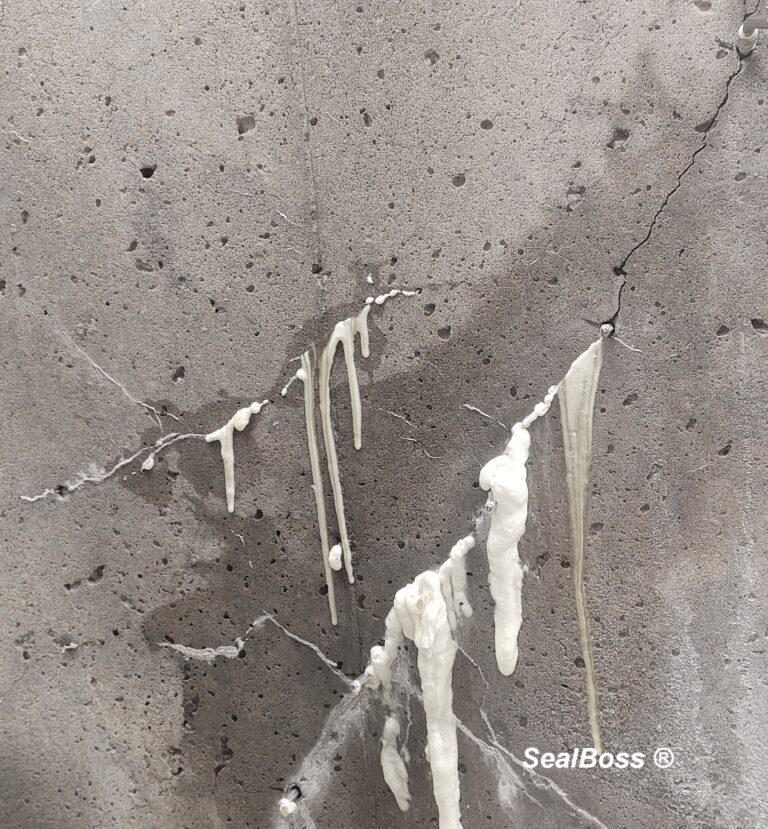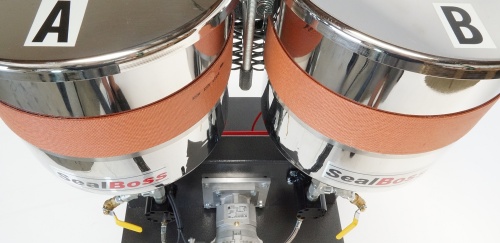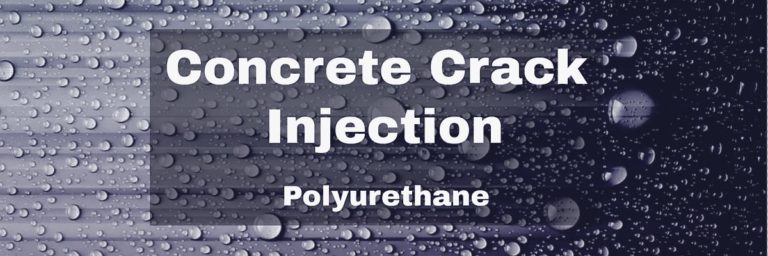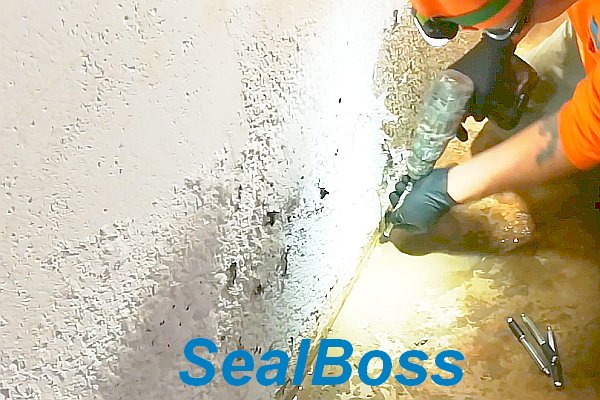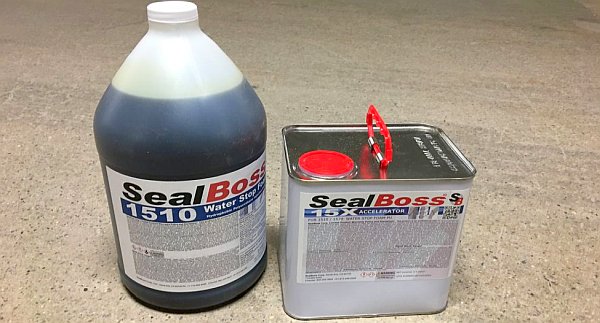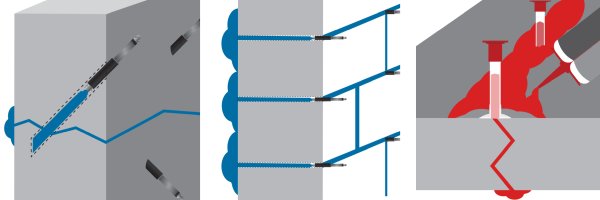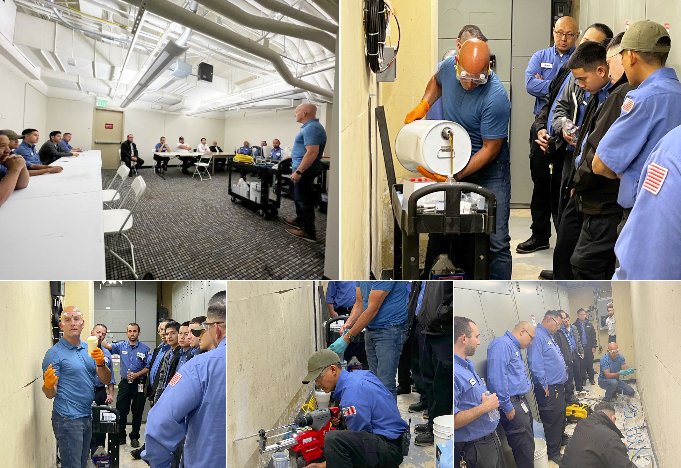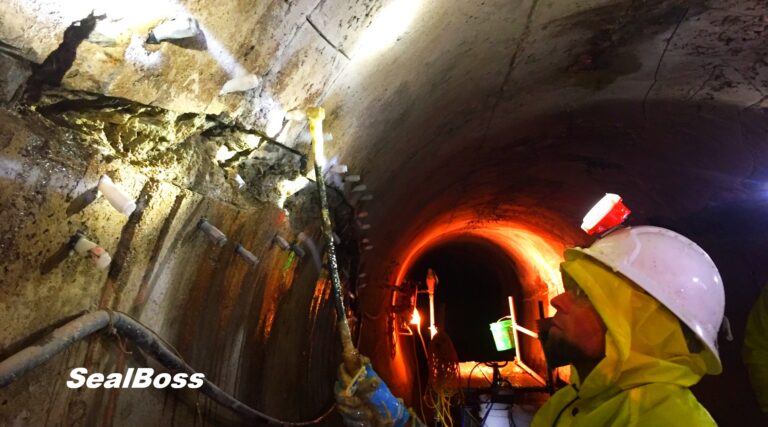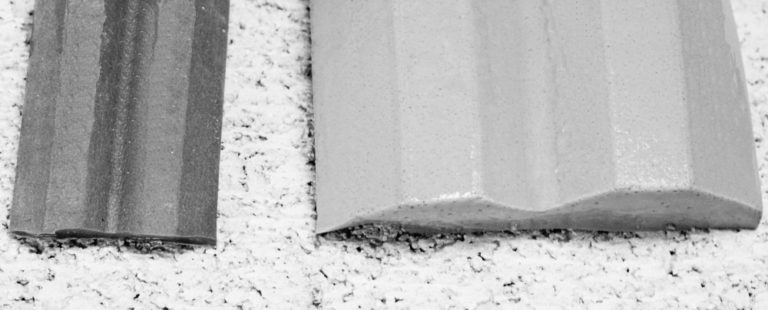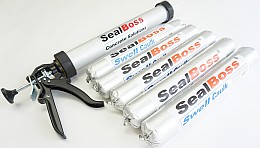Technical Bulletin
Joint Filler Maintenance
Elongation - Separation - Repair
A Concise Guide for Ensuring Optimal Performance and Longevity of Your SealBoss Joint Filler
Safeguarding the Durability of Your Concrete Joints
Background
The tensile elongation of semi-rigid joint fillers is a common characteristic to consider. Ultimate tensile elongation pertains to the degree of expansion a material can undergo, in terms of its length, before succumbing to fracture under tensile force. It is a common misconception, that employing a joint filler with a high elongation value can facilitate early joint filling in new flooring, with the filler then able to ‘stretch’ in accordance with the joint as it expands due to slab shrinkage.
This reasoning is flawed.
Tensile testing gauges the capacity of the joint filler material to stretch along the test specimen’s length. However, control joints in concrete floors don’t lengthen but rather widen laterally — side-to-side . Thus, the tensile elongation test does not accurately simulate real control joint movement or the joint filler’s capacity to accommodate this movement.
Consider the polyurea joint filler with a tensile elongation of 200%. It can stretch laterally — side-to-side — approximately 10% before it starts to split either cohesively (within the filler itself) or adhesively (along the joint filler/concrete bond line). Given that the shrinkage-induced joint widening often surpasses what the joint filler physically can withstand even under the best circumstances, early installation of joint fillers will likely lead to splitting or a loss of adhesion. Concrete shrinkage can cause the Joint Filler to split or separate over time.
This is a normal occurrence and not an indication of joint filler failure, and is clearly stated by the American Concrete Institute in the ACI 302.1R-04 Guide for Concrete Floor and Slab Construction, Section 9.10 – Joint Filling and Sealing
” 9.10.1 Time of filling and sealing—Concrete slabs-on-ground continue to shrink for years; most shrinkage takes
place within the first 4 years. The most significant shrinkage takes place within the first year, especially the first 60 to 90 days. It is advisable to defer joint filling and sealing as long as possible to minimize the effects of shrinkage-related joint opening on the filler or sealant. This is especially important where semirigid fillers are used in traffic-bearing joints; such fillers have minimal extensibility. If the joint should be filled before most of the shrinkage has occurred, separation should be expected between the joint edge and the joint filler or within the joint filler itself. These slight openings can subsequently be filled with a low-viscosity filler recommended by the same manufacturer as the original filler. If construction traffic dictates that joints be filled early, provisions should be made to require that the contractor return at a preestablished date to complete the necessary work using the same manufacturer’s products. Earlier filling will result in greater separation and will lead to the need for more substantial correction; this separation does not indicate a failure of the filler. …” (ACI 302.1R-04 – Section 9.10)
The Product
The SealBoss 6500 is a robust, semi-rigid polyurea joint filler, made entirely from solid materials. Composed of two components, it exhibits a Shore hardness of 80 A and approximately 200% elongation, indicative of its strength and flexibility. The product is primarily engineered for the purpose of filling and safeguarding contraction and construction joints found in concrete floors of industrial, retail, and commercial premises.
The formulation of SealBoss 6500 is purposefully designed to withstand the rigors of high-traffic and heavy-load environments typical of industrial and retail concrete floors. Its pivotal role is not just to withstand the continuous traffic in commercial warehouses and the load from forklift operations, but also to seal and safeguard joint edges. By doing so, it extends the longevity and maintains the integrity of the surfaces it is applied to. This makes it an indispensable solution for businesses that prioritize facility durability and maintenance.
Routine Maintenance and Cleaning
Ensure to sweep the polyurea joint filler daily to eliminate any accumulated dust or debris. For dealing with spills or hardened dirt, employ a solvent-free cleaner to dislodge the grime and proceed with your usual clean-up routine. For commercial floors that undergo auto-scrubbing, adhere to your regular cleaning protocols and perform spot cleaning as necessary.
In case the joint filler requires repair, please consider these steps:
Initiate by cleaning the area to remove any dirt and debris. Use a solvent to wipe off any residual grime, then fill the cavity with the 6500 filler. Use a floor scraper blade to remove any surplus filler, ensuring a level finish.
With a dust-free concrete saw or angle grinder equipped with a Brazed Vacuum saw blade, cut a depth of ½” (12mm) until fresh concrete is evident on both sides of the joint. Proceed to clean the filler surface by removing any dirt and debris, then wipe it with a solvent. Fill the void with polyurea joint filler and use a razor blade to shave off excess filler, resulting in a smooth finish.
Utilize a specialized removal blade, 4”, 6”, or 8”, to remove the full depth of the joint filler until fresh concrete is visible on all three sides of the joint. Once the joint is clean and free of all dust and debris, apply the new SealBoss 6500 as per the installation instructions.





























